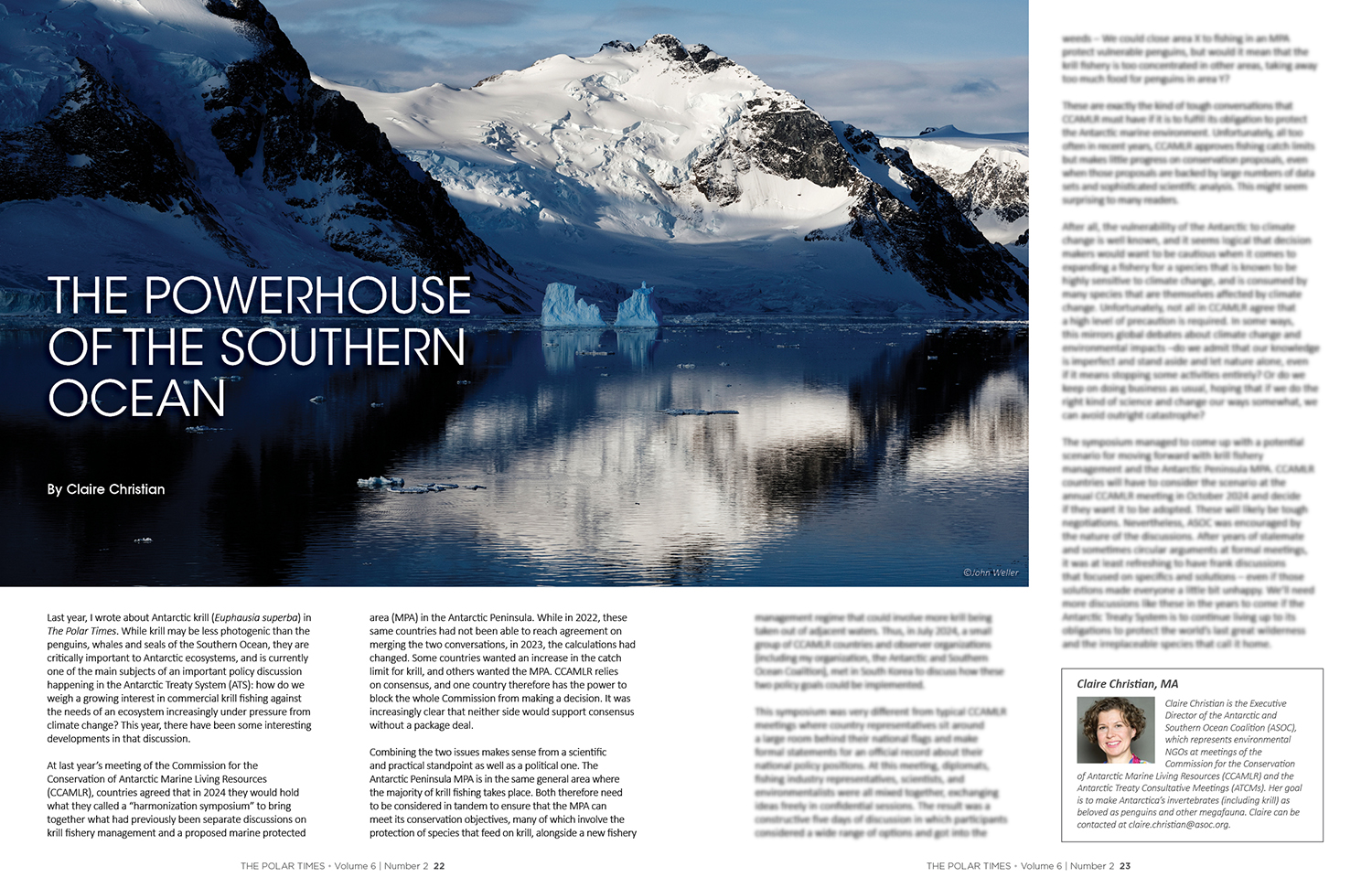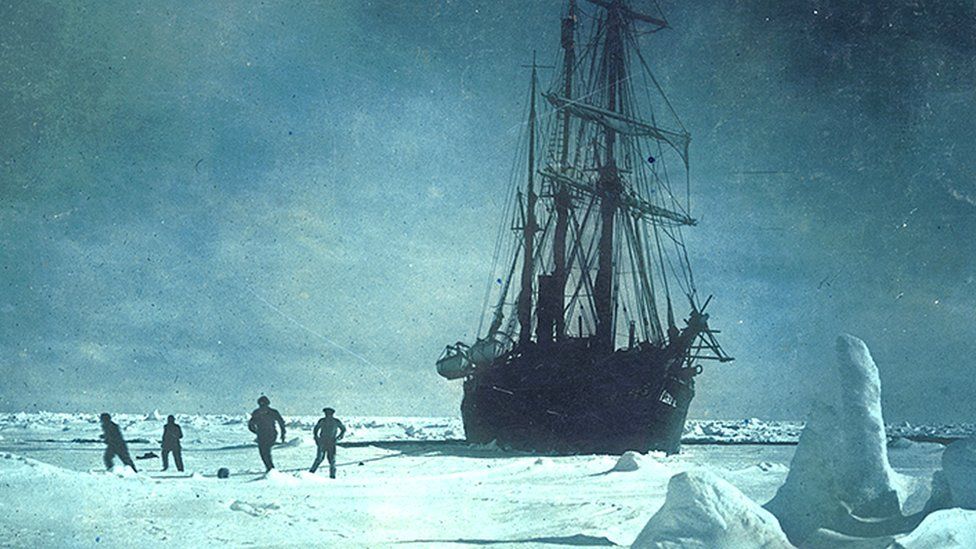Here is a preview of what is inside The Polar Times latest issue, Autumn/Winter 2024-2025.
Claire Christian, Antarctic and Southern Ocean Coalition (ASOC)
Last year, I wrote about Antarctic krill (Euphausia superba) in The Polar Times. While krill may be less photogenic than the penguins, whales and seals of the Southern Ocean, they are critically important to Antarctic ecosystems, and is currently one of the main subjects of an important policy discussion happening in the Antarctic Treaty System (ATS): how do we weigh a growing interest in commercial krill fishing against the needs of an ecosystem increasingly under pressure from climate change? This year, there have been some interesting developments in that discussion.
This article and many others are only available in print. Become a member to receive The Polar Times.




